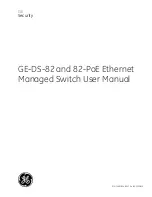
network location of a RAP might play host to the RAP of multiple cells, as shown in
Figure 34: PoP with
Multiple RAPs, on page 85
.
Figure 34: PoP with Multiple RAPs
When the basic cell composition is settled, the cell can be replicated to cover a greater area. When replicating
the cells, a decision needs to be made whether to use the same backhaul channel on all cells or to change
backhaul channels with each cell. In the example shown in
Figure 35: Multiple RAP and MAP Cells, on page
85
, various backhaul channels (B2, C2, and D2) per cell have been chosen to reduce the co-channel interference
between cells.
Figure 35: Multiple RAP and MAP Cells
Choosing various channels reduces the co-channel interference at the cell boundaries, at the expense of faster
mesh convergence, because MAPs must fall back to seek mode to find neighbors in adjacent cells. In areas
of high-traffic density, co-channel interference has the highest impact, which is likely to be around the RAP.
Cisco Mesh Access Points, Design and Deployment Guide, Release 7.3
OL-27593-01
85
Site Preparation and Planning
Cell Planning and Distance















































